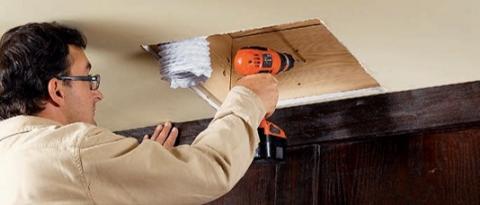
Bathroom Exhaust Fan
Installed correctly, a bathroom exhaust fan can be used to remove moisture and odors and also run continuously as a whole-house fresh air system for a healthier indoor environment.
Bathroom Exhaust Fan Background

Washing and bathing release significant amounts of water vapor into the air. For instance, a shower produces a half pint of water vapor for every 5 minutes of run time. With no exhaust fan, this moisture can accumulate and increase the risk of mold and mildew on floors, walls, and ceilings. High-efficiency exhaust fans can quietly exhaust bathroom air to the outside. These bathroom exhaust fans can be operated manually or automatically with humidity sensors. In addition, they can be operated continuously as a whole-house fresh air system to exhaust stale air. Make-up fresh air supply relies on natural infiltration air flow through the holes and cracks in home construction.
Tips to Sell Quality Installed Home Improvements
Home Improvement Expert is a valuable tool for organizations committed to quality installed work. The following tips help optimize the value of this tool when selling home improvements:
Trust Matters: Inform homeowners how your work conforms to this world-class expert guidance. Recommend they visit the DOE website as evidence these are indeed official best practices.
Knowledge Matters: Take advantage of the Building America Solution Center as a resource for becoming an expert on these projects.
Clarity Matters: Tell prospective clients to contrast your expert-recommended best practices with other contractors.
Value Matters: Advise prospective clients to insist other bids also include these checklists to ensure equivalent quality work.
Message Matters: Showcase on your website and marketing materials that your company uses the highest quality best practices specified on HIE Checklists.
Experiences Matter: Provide visual evidence contrasting the difference between poor and high quality work such as infrared images; pre- and post-energy bills; short and long warranties; and simple charts and graphics depicting performance advantages.